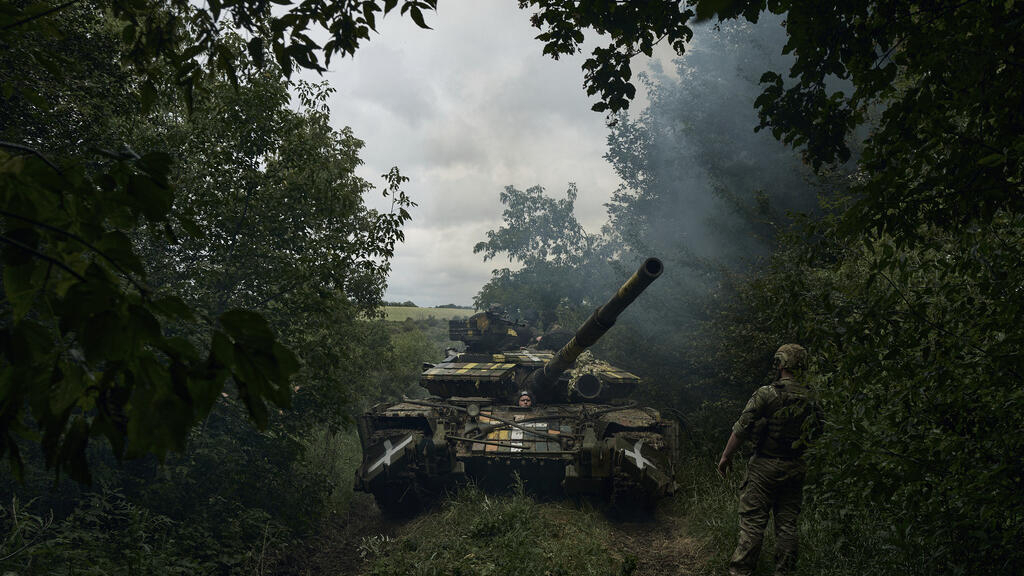Since the start of the Ukrainian counteroffensive in May, kyiv claims to have captured eight villages, but none of great strategic importance. Is this slowness a tactic or a sign of failure?
Pyatykhatky, population 300, about fifty kilometers south of Zaporizhia. This Monday, June 19, the Ukrainian Army celebrated having managed to recapture this town from the hands of Russian forces. It is the eighth town recaptured since the start of the counteroffensive in May, and the second in the Zaporizhzhia region in a week.
These territorial conquests have been described as “limited” by the Institute for the Study of War, Institute for the Study of Wara think tank which has been publishing daily reports on the war in Ukraine for almost a year. As he claims, the outposts are essentially small villages of no significant strategic importance.
Very different counteroffensives
The Ukrainian army has not even “still reached the defensive structures that the Russians have put up to face the counteroffensive,” says Huseyn Aliyev, a specialist in the Ukrainian-Russian conflict at the University of Glasgow.
This is a far cry from the lightning successes that Kiev recorded in Kharkiv and Kherson during previous counteroffensives launched in late summer 2022. An apparent slowness on the part of the Ukrainian Army that Moscow was quick to present as a sign that the counteroffensive had failed.
Furthermore, this time, the Ukrainian forces are equipped with modern equipment – tanks, ammunition, radios, among others – supplied by Western countries and which would supposedly give Kiev a decisive advantage in its counteroffensive.
Russian authorities have issued a series of statements claiming that their troops have repelled assaults along the entire front line. Russian President Vladimir Putin even spoke of “catastrophic losses” for the Ukrainian Army. These statements were supported by images of destroyed Western tanks, which were widely circulated on social media by Russian bloggers.
There was clearly a failure on the part of the Western media to present the counter-offensive and its objectives before it began, says Glen Grant, an analyst at the Baltic Foundation for Security and a specialist in Russian military issues.
The emphasis in recent months on the delivery of modern equipment to Kiev “may have raised the Ukrainian military’s expectations of quick success too high,” says Sim Tack, a senior analyst at the Baltic Foundation for Security and a specialist in Russian military issues.
“It is true that if the success of the Ukrainian counter-offensive is assessed in terms of territorial gains, the advance may seem slow compared to the recapture of Kharkiv,” Tack explains. But there was a change in nature from autumn 2022. “At that time, it was still a war of movement, which meant that a quick counteroffensive could find the enemy by surprise where they had neglected their defensive positions,” Aliyev notes.
The problem is that, since the beginning of January, Russia has had plenty of time to “set up a defensive line that has no real weak points,” Aliyev notes. In other words, it makes no sense to launch all of your forces—including the latest equipment supplied by NATO countries—against positions that have been strengthening over the months.
It would be the ideal occasion for Russia to inflict maximum casualties on the enemy. And “any video of a destroyed Western tank is a defeat for Ukraine because it risks weakening the support of Western public opinion,” says Tack.
But where are the new brigades?
Hence the idea of advancing more “slowly, but surely to wear down Russian resistance until the defensive line is broken,” says Grant. In other words, by attacking along the Russian defenses, the Ukrainians are testing “the attrition counteroffensive,” as Tack argues.
Thanks to ammunition and equipment supplied by Western countries, “the Ukrainians seem to have more reserves than the Russians,” says Tack. “What we are seeing is that the Russian Army is very busy redeploying its forces from one place to another in response to the Ukrainian offensives. That is not what you usually do when you have reserves to quickly reinforce a part of the front line.” notes Grant.
But there is a fine line between a measured advance and excessive caution “which could give Russia time to adjust its forces to the reality of this counteroffensive,” Grant warns.
One of the great mysteries in this regard refers to the brigades that Ukraine has formed for this effort to recover the southern Ukrainian territories conquered by Russia. “kyiv has been able to create 12 new motorized brigades equipped with Western equipment, but seems to have only deployed three of them to the front so far,” Aliyev notes.
“Nobody knows exactly why the Ukrainian army hasn’t used all these brigades yet,” Grant says. There are many hypotheses, one of which is that kyiv wants to keep enough fresh troops in reserve to be ready to hit the Russian defense lines when they start to crack.
But it may not be that all the new equipment makes it through, or that the training of the soldiers of these brigades has not yet been completed. “We must not forget that the Ukrainian Army has so far been limited essentially to defense, and that now it needs to be trained for the offensive. It does not go from one to the other in a snap of the fingers,” says Grant.
However, Ukraine does not have all the time in the world to carry out its counteroffensive. Firstly, because Western countries need results to show public opinion that supporting kyiv makes a difference. Secondly, because you have to take time into account. “Ukrainian forces have until the end of the summer to make a substantial breakthrough to validate their strategy in the eyes of the world. After that, the autumn and winter weather will make it very difficult to advance,” Aliyev said. So we have to find a target that can be taken within this timeframe.” For Huseyn Aliyev, the nearest major city is Donetsk, but “it is very well defended by the Russians.”
This text was adapted from its original French version.





![[Img #74683]](https://thelatestnews.world/wp-content/uploads/2024/12/The-main-mistakes-to-avoid-when-betting-on-electronic-sports-150x150.jpg)








